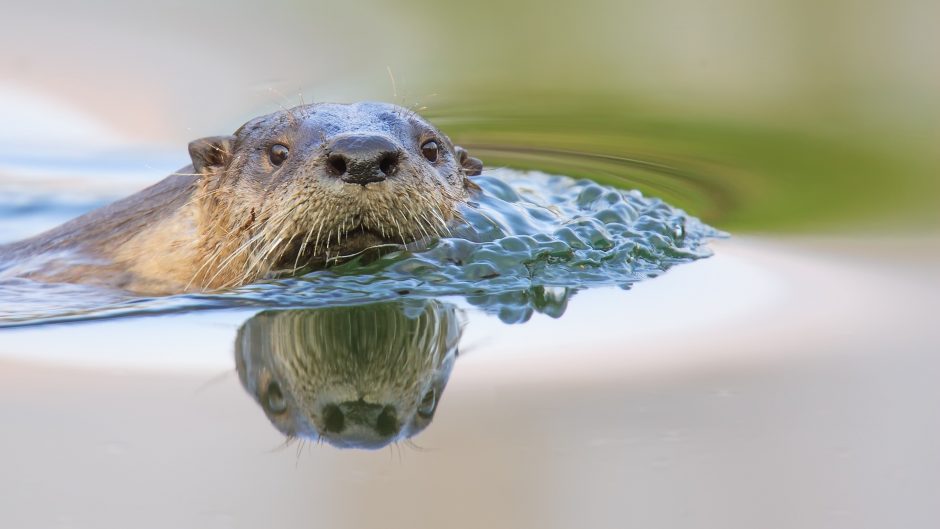
Winner of our Photo Challenge – “Shallow Depth of Field”
The quality of entries in this challenge is no doubt the highest yet. This was no easy decision, and I could easily tout the merits of each photo submitted, as they all were excellent and have many takeaway lessons.
However, there can be only one, and it is not only an exquisite shot, but illustrates several key things I’d like to discuss when harnessing the wonderful power of a shallow depth of field when it comes to nature and wildlife photography.
The winner of this Shallow Depth of Field photo challenge is the two-person team, Lori and Richard Rothstein! Their stunning photo of a river otter, titled “River Otter Reflection” is not just an alluring, well-composed, and an all-around beautiful photo, but it really shows us how a shallow depth of field (aka DOF) can turn a wildlife portrait into something very artistic!
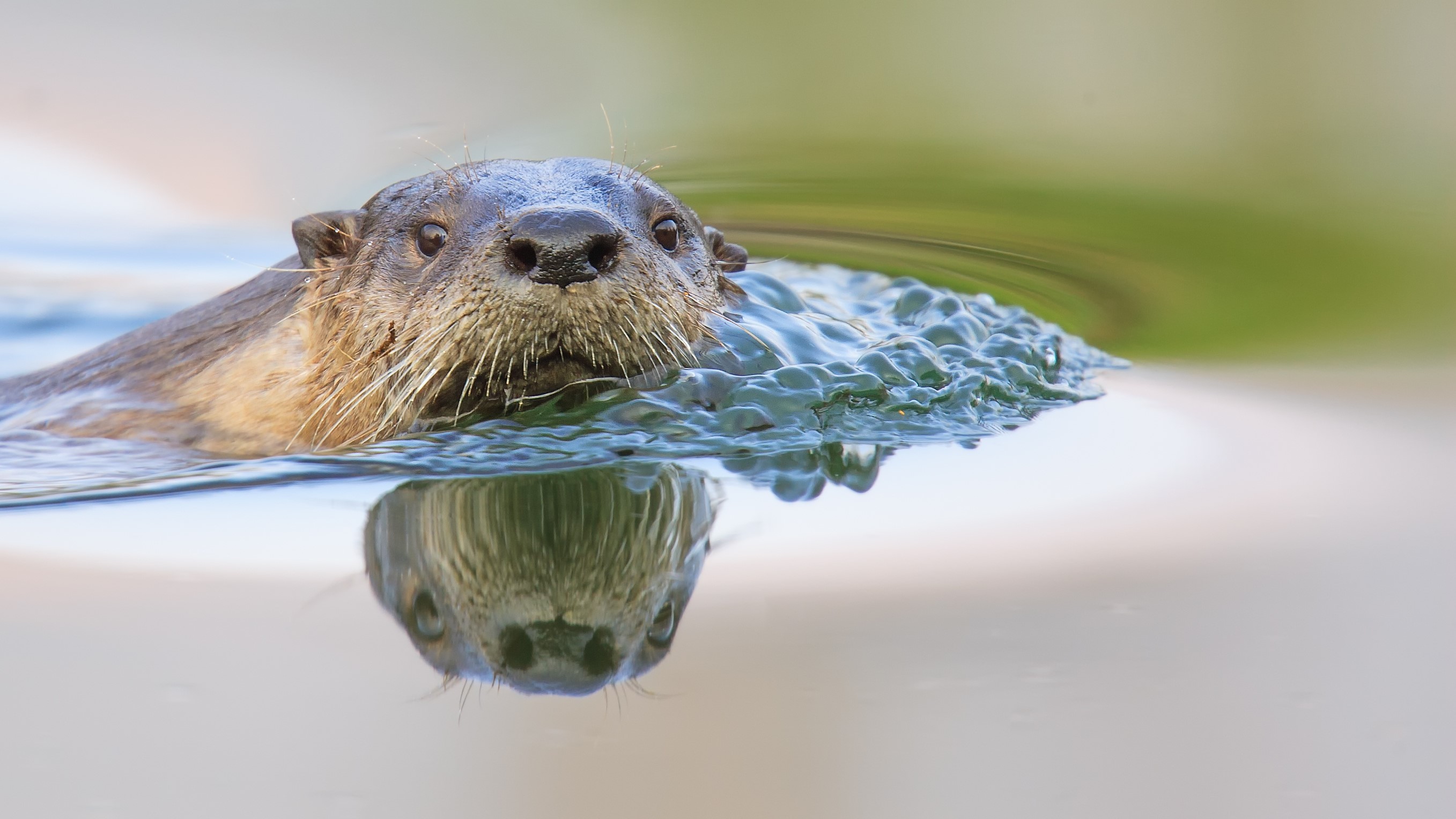
River Otter Reflection, by Lori and Richard Rothstein. f/5.6, 1/200th of a second, ISO 200
Composition
Right off the bat, I want to talk about the composition of this photo, as it illustrates some great lessons.
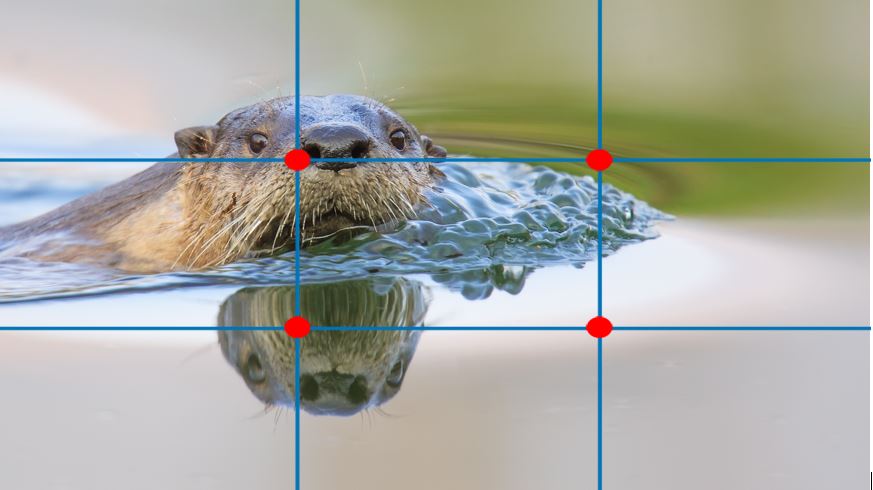
The first thing you should always think about when composing a photo is “does it adhere to the rule of thirds.” Now, photos definitely do not HAVE to adhere to this rule, and you know what I say—rules are always meant to be broken. However, if it does not adhere to this classic rule of composition, you should be able to explain why you chose for it not to.
In this case, Lori and Richard nailed it with the composition, knowing that the aesthetics of the rule of thirds is almost always appropriate and can make any scene come to life and instill a sense of intrigue and curiosity on part of the viewer. As you can see, the otter is lined up perfectly on the left two intersecting points, and the animal (and its interesting water ripple) are in the left 2/3s of the scene. Nicely broken down!
But one thing I want you really to notice is the top right intersecting point. It is focused on a very specific part of the scene, and one that I feel gives this photo such an allure for the DOF challenge. This pleasing out-of-focus shape and color of the reflection is really quite beautiful. It’s green and earthy, with a very soft blur that allows the viewer to acknowledge it’s there, but not become too distracted by any specific patterns, shapes, or distinct reflection. This is what you get when you aim for a more shallow depth of field. Lovely!!
Camera Settings
Now let’s check out the camera settings used for this shot. Lori and Richard chose to go with f/5.6, 1/200th of a second, ISO 200. These are spot on for a few different reasons.
First, the aperture of f/5.6 is a nice setting that yields a good combination of sharp focus for the subject, as well as a pleasing blur that which is not within that slice of focus. In some cases, f/5.6 might be too wide of a focus and get too much of the background to show its textures, causing a distraction. However, there are a couple reasons why f/5.6 is great here. First, I’m sure this is a shot with some sort of telephoto lens. The longer the focal length, the more blur you’ll get using the same aperture setting. For example, a 200mm lens shooting at f/5.6 will have less bokeh than a 500mm lens at f/5.6. This is just part of optical physics and frankly it’s not worth memorizing the science behind it. It’s just important to know that with big zoom, you can get more blur and a shallower depth of field. This is why a 400mm f/2.8 lens is so coveted in the world of nature and wildlife photography, because f/2.8 at 400mm really gets rid of the background in your photos.
Anyways, I digress.
The other key thing about this shot is that they chose an ISO of 200. Now, you might be thinking since this combo gave them a shutter speed of 1/200th of a second, which isn’t all that fast for wildlife photography, shouldn’t they have played it safe and gone for ISO 400, 800 or higher? Maybe, but when shooting with shallow depths of field, when you know there will be a lot of uniform blur in the background like the water in this shot, grain or noise will stand out. Much more prominently than if you were shooting a very dynamic scene with lots of texture and detail, where the noise would essentially be masked by these elements. Thus, it’s important to shoot at the absolute lowest ISO you can afford given the scene. Sure, playing it safe at 1/400th of a second would be nice, but in this case they played it perfectly by freezing the motion of the otter enough for sharp focus, but getting the rest of the scene nice and smooth, with no noise or grain.
Takeaways
As I mentioned before, there were MANY great photos entered this time, and kudos to you all for submitting them (and taking them in the first place!). But as you can see, this photo is indeed special, not just because it looks great, but there are some very deliberate choices here that allowed it to really stand out.
When shooting at a shallow DOF, what you’ll be blurring out can actually be just as important as what you’re focusing on. Sure, the river otter is the star of the show here, but the soft green color and gentle ripple of the background takes it to the next level. And this is the case with any shallow DOF photo—try to be as deliberate as you can to orchestrate a complementary background. Perhaps you see some similar colors, as Ronald Manley did in his great photo of a tufted titmouse with unique complementary background to the side of the bird.
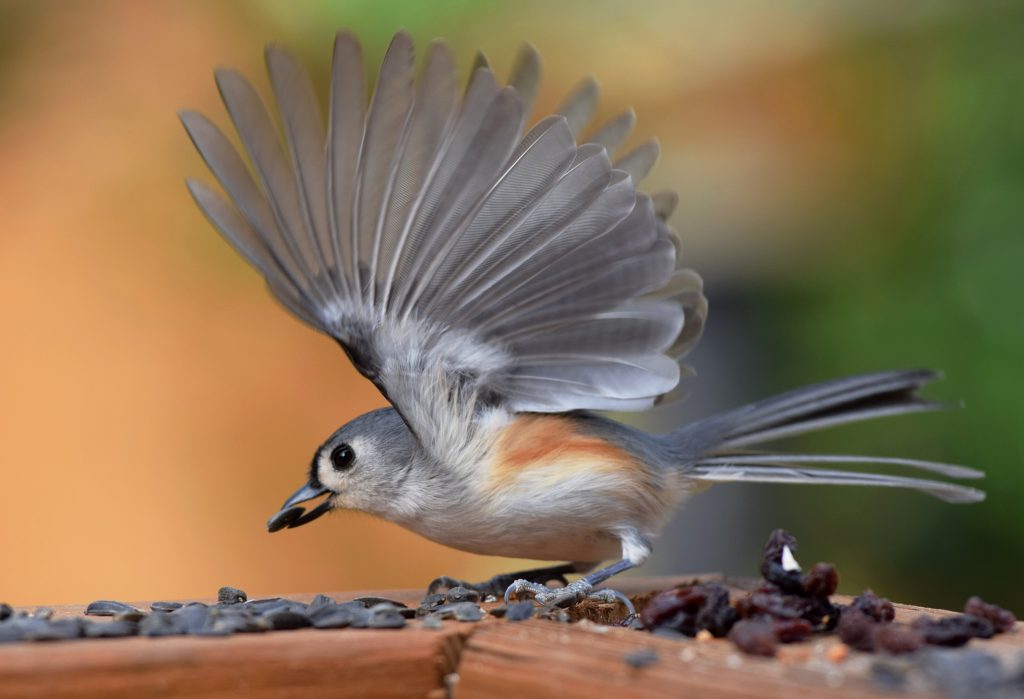
Or perhaps it’s incorporating a deliberate leading line in the background, like Ramiro Zapeda did in this lovely photo of a bison in Oklahoma. I just love the fact that the road directs the eye from the bison to the distant horizon, thus illustrating the wonderful expanse of the North American prairie here.
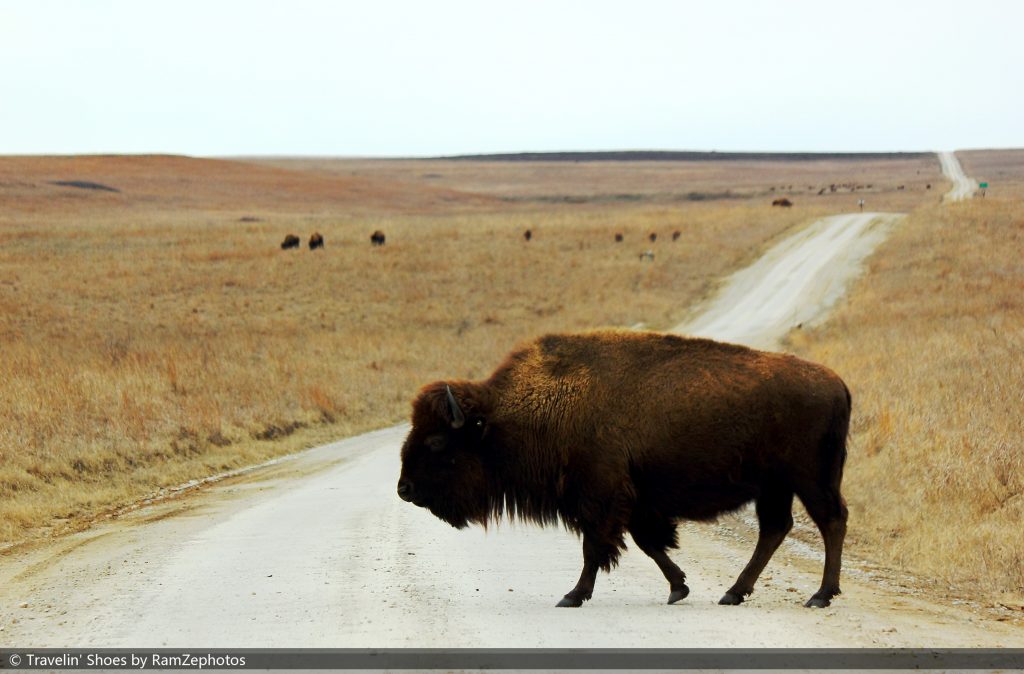
The trick is to be quite deliberate about what’s going on in the rest of your scene, even if you’re trying to blur it out or otherwise not focus on that part.
As always, thanks to you all for wonderful submissions and looking forward to the next challenge…stay tuned!
All the best,

Court
Leave a reply